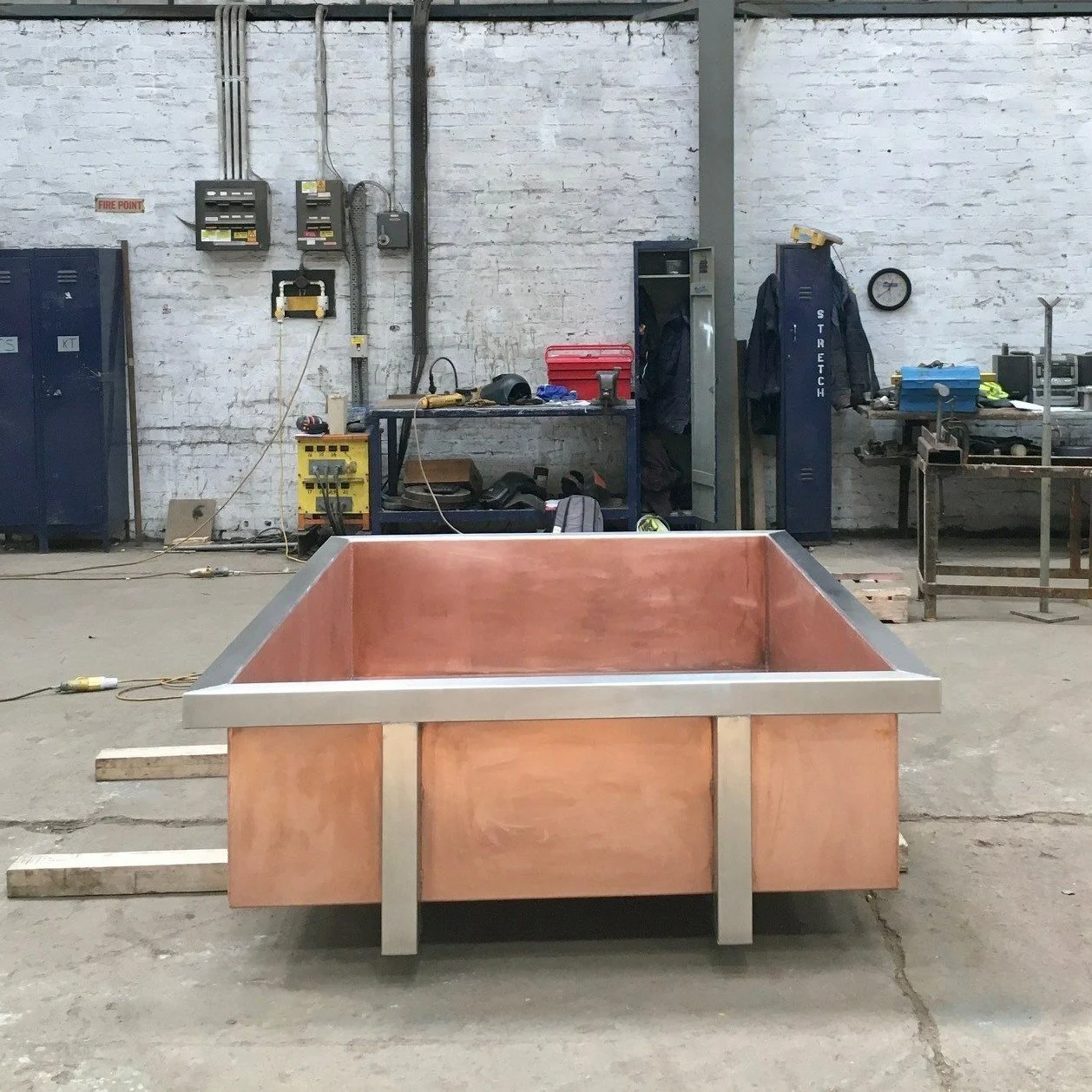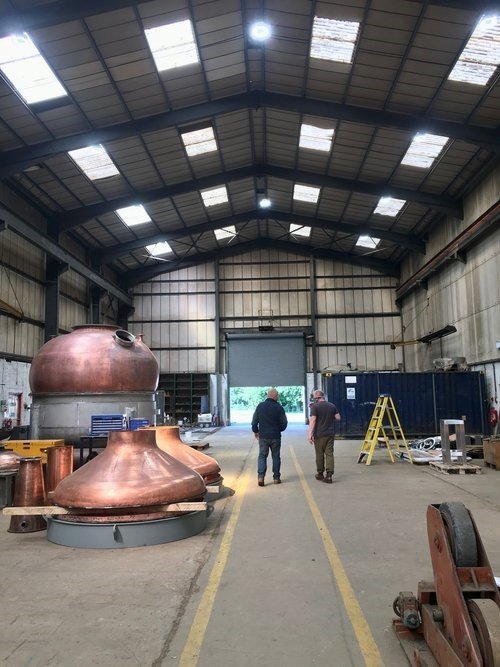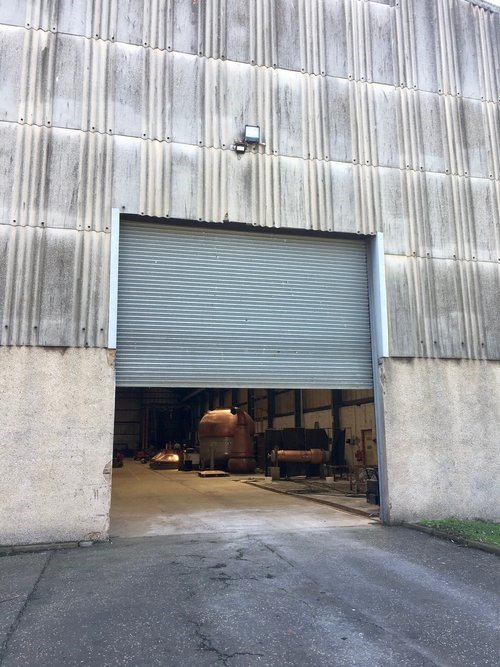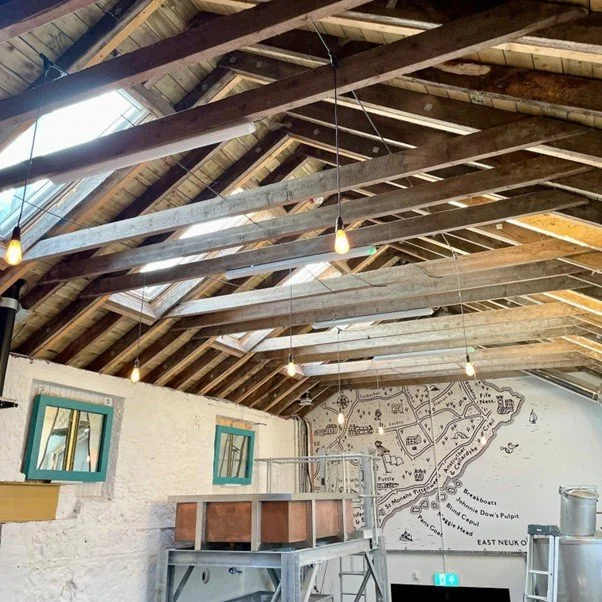Our Coolship Arrives…
By Lucy Hine
The coolship in contruction at McMillan Coppersmiths, Prestonpans.
This copper tub might not look much to you, but to us it is everything.
This vessel’s manufacturing and installation marks the start of us becoming wild brewers. Our longest-held ambition.
Copper with steel frawework, it was designed and built for us by traditional Scottish coppersmiths, McMillan & Co, in Prestonpans, just around the coast from Edinburgh. It has finally been installed into the rafters of the brewery over winter while we’ve been closed, and we hope to get a few brews through it this season before the nights start to warm up.
This will be the first time that we will solely use airbourne yeasts and microflora to ferment our beer, rather than commercial strains that we buy, blend and propagate (as we do for our regular beers). The result will be completely natural, organic beer, made with a lot of heart, with nothing unnecessary added or taken away - a purer reflection of our location here on the east coast of Scotland. It will hopefully bring us a step closer to doing what is second-nature to many of the wine and cider makers we most admire.
McMillan & Co are a firm of traditional Scottish coppersmiths who have been supplying copper vessels, mainly to the distilling industry, in some form, since 1867. This was their first brewery coolship, which was perhaps a welcome departure from the curved sides of the copper pot stills they normally work on.
We were so glad to be able to work with a local business on this project and we spent time visiting the workshops last year while the manufacturing was in process.
What does a ‘coolship’ do?
Normally when brewing, once the grain and water have been mashed together, and the hops boiled, the unfermented sugary, hoppy liquid is cooled via a heat exchanger and put into some sort of sealed, clean vessel, ready for the selected yeast to be pitched. The liquid is fermented to a desired point and then you’re effectively left with a beer to condition and package in some form.
Wild brewing is different at all points of the process because you are trying to achieve a very different result. The most significant difference, however, is the way in which the beer ferments. Instead of cooling with a machine, you fill the sugary, hoppy unfermented liquid into your cooling tray, the ‘coolship’, and leave the beer there to be innoculated with whatever airbourne yeasts happen to be residing in the room. You can leave windows open for good measure!
The airbourne yeasts settle on the service of the liquid (which is why the trays are so wide and flat, to give you maximum innoculation surface area) and then the next morning, if it’s cooled sufficiently, you can move the beer into a tank to settle and mix. And then from there into some kind of wooden vessel, a cask or a larger foudre, where it will stay for many months or even years.
From the point the beer gets settled in a cask, it can take weeks for anything to start happening, but the hope is that you’ve ended up with enough of the right wild elements in the batch to start a spontaneous form of fermentation. There are equal measures of calculation, biology and luck at play here and it’s impossible to know what we’ll end up with.
Coolships have been used for centuries, most famously in Belgium, in the breweries of the great lambic producers, like Cantillon, 3 Fonteinen, Tilquin and only a small number of others.
Their beers are the ones which first thrilled us like beer had never done before. They were also responsible for planting the seeds of this project in our heads. So like a number of others non-Belgian before us, we are going to give it a go. A lambic-style, East Neuk organic wild beer.
We’ll be raising a glass of Cantillon next week after our first brew through our coolship and we’ll be sure to keep you posted on how it all goes…






